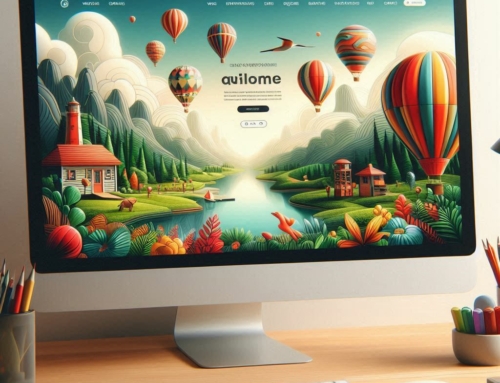Introduction
In today’s digital age, Artificial Intelligence (AI) is reshaping industries, and web design is no exception. AI-powered tools offer unprecedented efficiency, personalization, and optimization capabilities, making it easier than ever to create visually stunning and functional websites. This comprehensive guide explores the advantages of using AI in web design, highlights popular AI tools, provides a step-by-step walkthrough on building a website with AI, and examines future trends in AI-powered web design.
Advantages of AI in Web Design
Speed and Efficiency
AI streamlines the web design process by automating repetitive tasks such as layout creation, content generation, and image selection. This significantly reduces the time required to build a website while ensuring consistency and quality.
Personalization
AI analyzes user data to create personalized experiences. For example, AI can tailor content, recommend products, and adapt the website’s interface based on user behavior and preferences, enhancing user engagement and satisfaction.
Improved User Experience
AI-driven design tools predict user interactions and preferences, allowing designers to create intuitive interfaces that optimize user experience. Features like chatbots and virtual assistants provide real-time support, improving overall user satisfaction.
Enhanced SEO
AI optimizes websites for search engines by analyzing content, suggesting relevant keywords, improving load times, and ensuring mobile responsiveness. This results in better search engine rankings and increased organic traffic.
Popular AI Tools for Web Design
- Wix ADI (Artificial Design Intelligence)
- Wix ADI is an AI-powered tool that creates personalized websites based on user inputs. It asks users questions about their business and design preferences and generates a customized website with relevant content, layout, and features.
- Wolfram Alpha
-
- While primarily known as a computational knowledge engine, Wolfram Alpha can be used for generating reports and data visualization, which can aid in content creation and data-driven design decisions.
-
- Adobe Sensei
-
- Adobe Sensei is Adobe’s AI and machine learning framework embedded in various Adobe Creative Cloud applications. It helps designers automate mundane tasks, enhance workflows, and improve overall creativity and productivity.
-
- Weglot
- Weglot provides AI-powered website translation services. It automatically detects and translates content into multiple languages, allowing websites to cater to a global audience without extensive manual translation efforts.
- Figma
-
- Figma is a collaborative interface design tool that incorporates AI features for design suggestions and workflow improvements. It helps teams create and prototype digital designs more efficiently.
-
- Canva
-
- Canva utilizes AI to suggest design elements, layouts, and templates for various digital assets, including websites. It simplifies the design process for non-designers by offering intuitive tools and ready-to-use assets.
-
Step-by-Step Guide to Building a Website Using AI
Step 1: Define Your Goals and Requirements
Begin by outlining your website’s purpose, target audience, and key features you want to include. This will guide the AI tool in generating a website that aligns with your objectives.
Step 2: Choose the Right AI Tool
Select an AI-powered website builder that suits your needs and preferences. Consider factors such as ease of use, customization options, and specific features offered by each tool.
Step 3: Provide Input and Preferences
Most AI tools will prompt you to answer questions about your business, style preferences, and desired functionalities. Provide detailed and accurate information to ensure the AI generates a site that meets your expectations.
Step 4: Customize the Generated Website
While AI tools generate a basic website structure and content, customize it to reflect your brand identity. This includes modifying layouts, updating images and text, and integrating any additional features or functionalities.
Step 5: Optimize for SEO and Performance
Utilize the AI tool’s recommendations to optimize your website for search engines. This involves incorporating relevant keywords, optimizing images and videos, and ensuring the site is fast-loading and mobile-friendly.
Step 6: Test and Launch
Thoroughly test your website to identify and resolve any issues. Check for functionality across different browsers and devices, review navigation flow, and ensure all interactive elements work as intended. Once satisfied, launch your website.
Future Trends in AI-Powered Web Design
AI and Augmented Reality (AR)
The integration of AI with AR technology enables immersive web experiences, such as virtual try-ons for e-commerce products and interactive storytelling elements that engage users in new ways.
Voice-Activated Interfaces
AI-driven voice interfaces are becoming more prevalent, allowing users to interact with websites through voice commands. This enhances accessibility and provides a hands-free browsing experience.
Advanced Personalization
AI continues to evolve in analyzing user data and behaviors, enabling deeper levels of personalization. Websites will dynamically adjust content and design elements based on individual preferences, optimizing user engagement.
AI in Content Creation
AI-powered content creation tools are advancing, generating high-quality, relevant content that resonates with users and improves SEO performance. These tools analyze trends and user interactions to deliver impactful messaging.
Conclusion
Building a website using AI offers unparalleled advantages in terms of speed, efficiency, personalization, and SEO optimization. By leveraging AI-powered tools, businesses can create sophisticated websites that not only meet but exceed user expectations.
Whether you’re a small business owner, entrepreneur, or digital marketer, integrating AI into your web design process can unlock new opportunities and elevate your online presence. If you’re ready to explore the potential of AI in web design, start with one of the recommended AI tools and embark on a journey towards creating a cutting-edge website that stands out in the digital landscape.
For a complete customized website solution – you may click here to contact us for a quote based on your requirements.



Leave A Comment